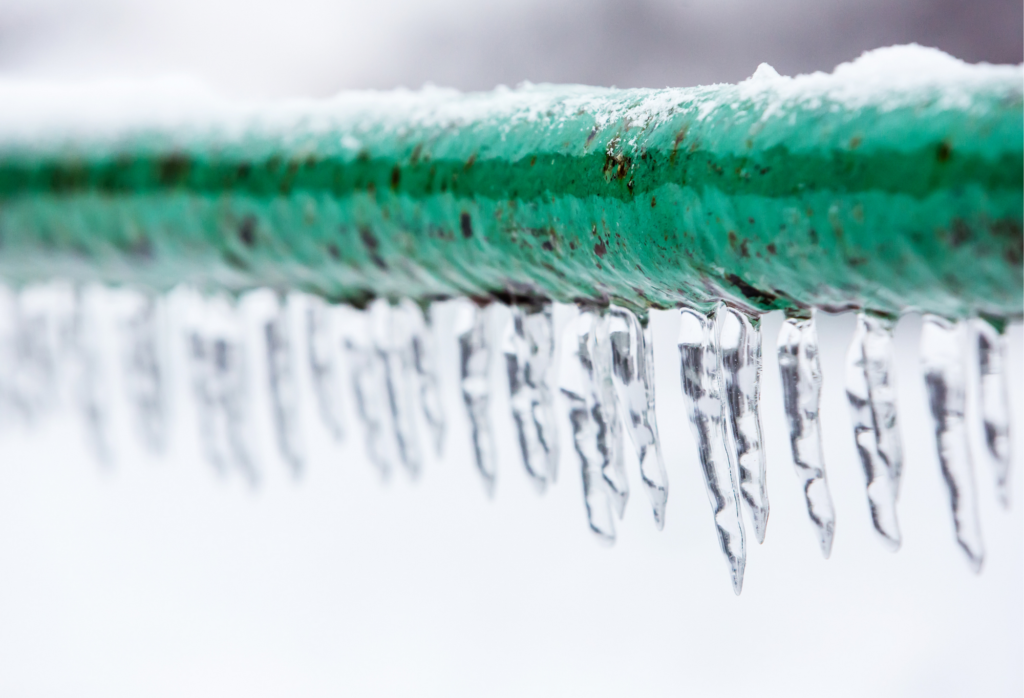While some of the trees still have their leaves and aren’t ready for winter, you have to be ready whether you like it or not. Your home, being one of your most valuable assets, needs to be ready for winter as well. One of the most important winter home maintenance tasks for homeowners is preparing pipes from freezing during the bitter cold months brought on by Jack Frost.
When extremely cold temperatures roll in quickly, pipes tend to freeze up, BURST, and flood your whole house. Typically, when temperatures go down to 20 degrees Fahrenheit or less for longer than five hours, pipes start to freeze up. Also, poor insulation in basements, attics, and crawl spaces contribute to your pipes freezing up. Because of high energy costs, many homeowners also turn down their thermostats to save money. Unfortunately, that, combined with poor insulation and extreme temps can lead to disaster.
Fortunately, there are some things you can do to prepare yourself and your home, not to mention, your pipes, for the bitter temperatures we are likely to experience this winter.
1 Find out where your water shut off valve is located. This is a preventative measure that will allow you to turn off the water if a pipe does freeze and burst! Plus, it is good knowledge to have if you ever need to do any plumbing.
2 Add heat tape to your pipes. It will keep pipes warm that are vulnerable to cold weather and the outdoors.
3 Keeping cabinet doors and shower curtain doors open during cold spells will allow the heat in your home to reach the pipes that are most susceptible to freezing. The pipes next to exterior walls are the ones most prone to freezing.
4 Another way to keep those pipes from freezing is to shine a lamp near the pipes. A 60-watt light bulb will help to warm the walls and the pipes inside.
5 Adding insulation to areas near the exterior foundation walls is a great prevention for pipe freezing. Insert insulation between the wall, floor joists and the exterior walls. If you have vents for the foundation in your crawl space, it is a good idea to insulate those vents on the outside as well using some form of rigid foam.
6 If you have a crawl space that you can access from inside your home, open the door and point a fan into the crawl space. The warm air from your living space will get to the pipes below.
7 During the coldest days, let your faucets run a very slow, steady stream of water to keep the pipes from freezing and bursting.
8 If a warm day presents itself, make sure your doors, windows, faucets, and outdoor outlets have insulation by sealing and caulking any gaps, holes, or open areas that allow the extreme cold access to your pipes and your living space.
How do you know they are frozen?

You can determine whether a pipe is frozen or not by turning on the water. If no water comes out then you will want to check and make sure nothing is leaking in the crawl space or basement, and make sure the water is turned on. If the valve is on, turn it off. Check to ensure the pipes haven’t ruptured, then immediately call a plumber or get busy thawing the pipes yourself (Warning: keep in mind that if the pipe bursts, you may have a huge, costly mess, so the expense of a plumber now might save you a lot of money in the long run).
At 616 Realty, we not only want to help you sell your home and find the home of your dreams, but we want to help you continue to build equity in the biggest investment of your life. We want you to enjoy the warm, cozy nights nestled in your lovely home during the cold Michigan winters knowing that you and your pipes are safe from disaster.
